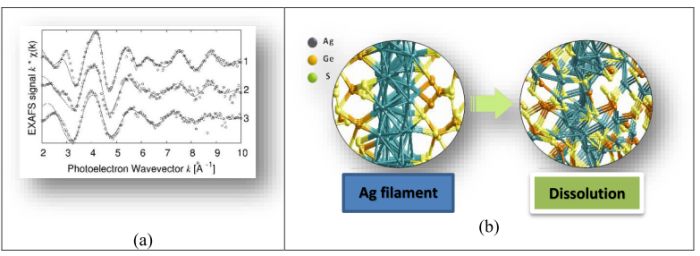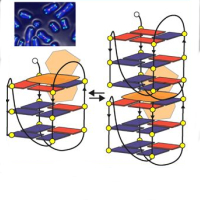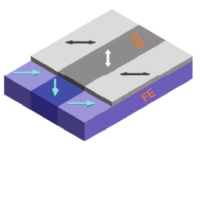The resistive switching mechanism of CBRAM clarified by using synchrotron characterizations
In recent years, resistive random access memories have received extensive interest for applications as non-volatile memories or neuromorphic computing. Conductive Bridging Random Access Memories (CBRAM) based on a glassy Ag-GeSx layer sandwiched between an Ag anode and an inert W cathode are considered to be one of the most promising technologies. Under the influence of an electric field Ag ions are produced at the anode and migrate in the electrolyte reaching the cathode and forming a conducting wire. This process is reversible by applying a bias with opposite polarity. However, the lack of understanding of the switching mechanisms at a nanoscale level prevents the successful transfer of this technology to the industry. CBRAM devices were characterized in their different resistive states using depth-selective X-Ray Absorption Spectroscopy (XAS) at the GILDA-CRG beamline at the ESRF in Grenoble.
Figure (a) presents the XAS spectra depending on the switching state of the device and on the depth. As-deposited CBRAMs shows a lower silver metal fraction with respect to the switched ones. Moreover, XAS surface data show a higher metal fraction below the anode with respect to the entire layer. Our experiments highlight that the switching process involves the formation of metallic Ag cone-shaped nanofilaments with their base on the active electrode. Moreover, the study of the local environment around Ag atoms in such devices reveals that Ag is in two very distinct environments with short Ag-S due to Ag dissolved in the GeSx matrix and longer Ag-Ag bonds related to an Ag metallic phase. Ab initio molecular dynamics (MD) simulations confirm that Ag favorably binds to S atoms. This provides an explanation on the reported instability of the ON state that can be attributed to Ag sulphidation and hence a rupture of the Ag–Ag metallic conduction path in the stack.

Figure a) EXAFS spectra of 3 prototypical samples: 1=switched CBRAM at the surface, below the anode 2= switched CBRAM in the whole layer, 3=pristine CBRAM at the surface. Data (points) and best fit curves (continuous lines). b) Schematic of a silver nano-filament in Ag–GeSx and the silver filament dissolution as obtained by MD.
Principal publication and authors
E. Souchier, F. d’Acapito, P. Noé, P. Blaise, M. Bernard and V. Jousseaume, Phys. Chem.
Chem. Phys. 17, 23931 (2015). DOI: 10.1039/c5cp03601a








